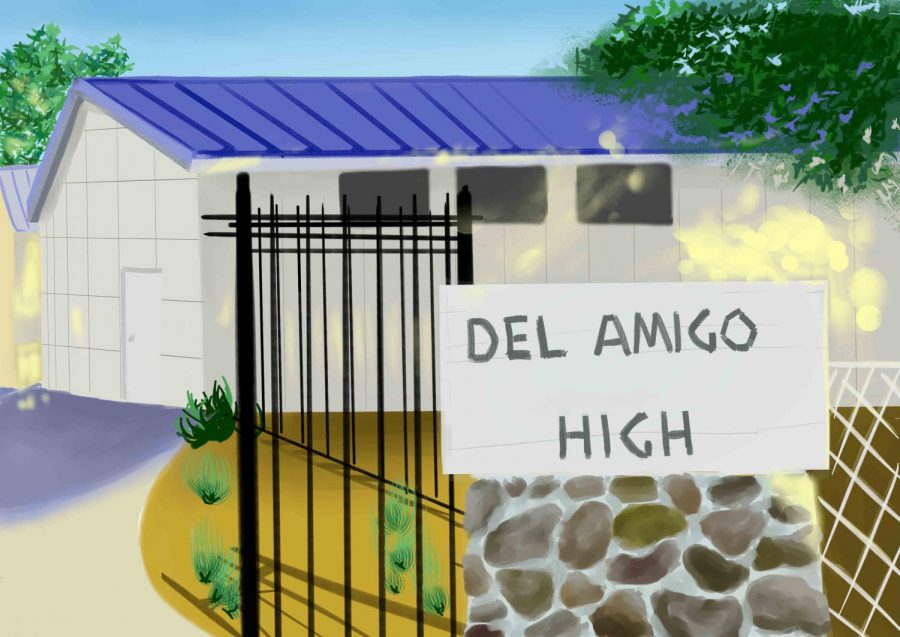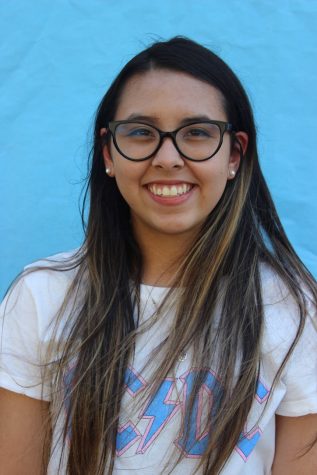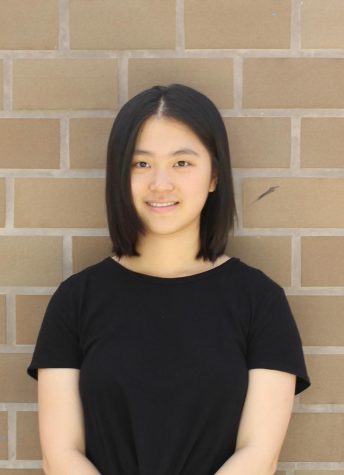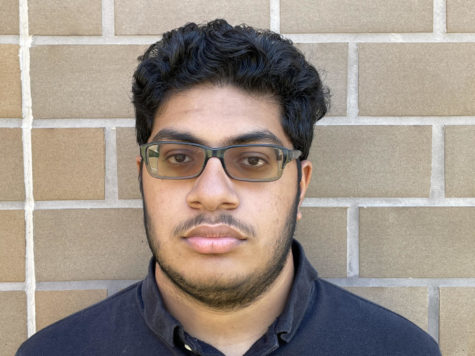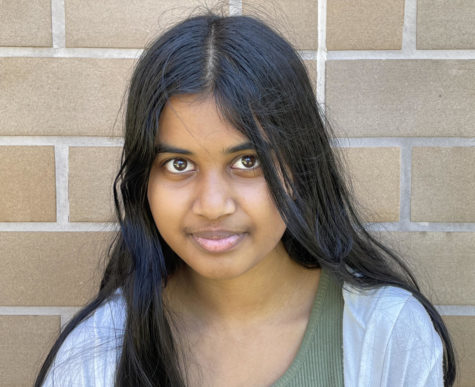- Best of SNO
- Community
- COVID-19 Coverage
- Investigations
- Issue 6: News 2020-21
- News
- School Life
- SUMMER OVERHAUL 2020-21
- SUMMER OVERHAUL 2020-21 Best News
- Ω Issue 6: 2020-21
Confusion surrounding Del Amigo COVID-19 cases expose lack of transparency to keep students with special needs and school staff healthy
A series of COVID-19 cases at Del Amigo High School, an alternative school in San Ramon, revealed unclear communication and a lack of understanding about how to protect special education students’ COVID-19 related needs within SRVUSD.
March 15, 2021
Shortly after Del Amigo High School, an alternative school within the San Ramon Valley Unified School District (SRVUSD), reopened on Nov. 17, 2020, a COVID-19 outbreak occurred within the special education student and staff population.
However, according to Superintendent John Malloy, the district “did not know that there were positive cases until Nov. 23.” There were eight confirmed cases — five of which were among Del Amigo’s staff.
Del Amigo runs a transitional program for special-needs students who have already graduated high school. Some of the students are unable to wear face coverings as a result of their conditions. For example, the school offers a program for students who eat with a feeding tube, which requires those students to have their face uncovered. Other examples include students with autism who are uncomfortable wearing a mask, or those with limited mobility.
Daniel Hillman, SRVUSD Assistant Superintendent of Facilites & Business Operations, says this may be one of the reasons for the higher transmission.
“It boils down to that we had a higher rate of transmission because we had students who couldn’t mask,” resulting in the November outbreak,” Hillman said.
Since school sites have reopened, COVID-19 cases have always been a possibility. In the face of a pandemic, parents and guardians rely on information presented by school districts to assess the current health of students and faculty. With the high health risks accompanied by students with disabilities, Del Amigo parents depend on district transparency to keep their children healthy. Many were disappointed to hear about the November cases, especially after a media outlet was the first to report on it.
The original story: local news reporter reports COVID cases before SRVUSD
The story was first reported on by Angela Ruggiero at the East Bay Times.
“We got a tip from someone in an email, and then the email was forwarded to me. We were contacted by the paraprofessional who agreed to go on record,” Ruggiero explained.
Yet Ruggiero’s story left many parents and students across SRVUSD questioning why the news was released from a news agency before the district itself. When SRVUSD released their email detailing the outbreak it read: “We can confirm that there were eight confirmed cases from one classroom on the Del Amigo campus. We can also assure you that the families and employees who were in contact were notified and all procedures regarding notification to the county department of public health were observed.”
The district went on to explain that some information released by the East Bay Times was inaccurate.
“The article was written and published before the scheduled interview with Superintendent Malloy. [Ruggieo] received her info from an employee in the article, published it and then went to meet with the superintendent and amended the article. So, there’s two versions of the article… The articles are contradictory because they had two interviews with different perspectives,” Hillman stated.
He then added:
“The superintendent’s comments on that article were factually correct, in the sense that protocol was not followed on the campus and that we did have positive cases. And that we reported the cases, and we followed County Health Guidance.”
Additionally, Hillman stated: “If I remember correctly, the East Bay Times reporter called and asked for comment from the district, and before getting that comment, published their article.”
Ruggiero articulated that because of her goal to get the information out as soon as possible, she was unable to initially get a hold of the district. Ruggiero further emphasized how the angle of the story wasn’t intended to criticize SRVUSD, but rather educate and inform the community.
“I know the district has a dashboard on their website that lets folks know what school might have had a case, but this was an outbreak because there was more than one person who had a case,” Ruggiero stated.
Ruggiero further emphasized how the circumstances alone–a special-needs classroom–meant that her responsibility as a journalist was to “to take all of this information in and remain unbiased.”
Ruggiero “was able to reach [Dr. John Malloy, the superintendent] eventually, but the story had gone online at [that] point.” Ruggiero detailed her conversation with Malloy and how he informed her of the misinformation contained in it. Ruggiero then updated the story and gave the SRVUSD an opportunity to respond and voice their perspective in her revised article.
Students with disabilities may need more support than currently provided
Ruggiero also spoke on the impact of COVID-19 cases in a special education school like Del Amigo specifically.
“These are special-needs kids that may not be able to keep a mask on, some of them are in wheelchairs and have other disabilities. This is a different kind of exposure that can happen compared to a fifth grade classroom,” Ruggiero said.
After seeing that an East Bay Times reporter responded to the news and informed the public with her articles before the district did, Del Amigo parents demanded increased transparency and proactive responses from the district. Otherwise, Del Amigo parents argued, reopening could hurt students more than help them, especially students with disabilities.
There were teachers who felt that the district had provided them with adequate support. Del Amigo teacher Jon Wieland felt supported by the district in a way that he and his students “should have or were able to adapt to [easily].”
However, not all teachers felt this way. Janet Jimenez, a Del Amigo Paraprofessional who spoke to Ruggiero on the record, openly voiced her experiences and concerns. She believes that SRVUSD put their students and staff in danger with the way COVID-19 cases were handled at Del Amigo. Jimenez stated that Del Amigo caters to a “population of students who could not express themselves if they didn’t feel well [and] put them in a classroom, without a mask and without requiring social distancing.”
When asked if SRVUSD had different protocols for reopening in the unique environment of a special education classroom, Hillman stated that they did not at the time.
“We didn’t have anything additional at the time. We were following the county guidelines and the county guidelines didn’t make any exceptions or any extra layers of protection for special education,” Hillman stated. “That wasn’t really something that was on their radar.”
Students with disabilities require unique, and often hands-on, care as is, in addition to COVID-19 protocols and procedures. Jimenez explained how part of her job already consists of taking students to the bathroom and keeping up with their hygiene, cleanliness, and safety, on top of assisting with learning. According to Jimenez, the problem arose when the district failed to “differentiate how we were going to teach and how we were going to care for the students’ hygienic needs.”
“In a classroom with COVID-19 [guidelines], you were expected to be six feet apart to have social distancing, it was expected that both the students and the staff would wear masks; those items were not looked into,” Jimenez emphasized. “If you take a student to even just wash their hands, you cannot do that from six feet apart. If you are showing them something, hand-over-hand, or showing them how to use a pencil, you cannot do that six feet apart, either.”
Not tailoring guidelines to fit the realities of working in a special-needs classroom made Jimenez feel uneasy working from Del Amigo’s campus.
“The school district should follow [county guidelines] more closely. At that time, the county was saying, ‘stay away, cancel Thanksgiving, don’t meet with family and friends and stay in your home.’ I didn’t see how… a school district would [then] say, ‘okay, go back to the classroom.’”
Following the outbreak, the district implemented new policies. According to Hillman, “since this incident at Del Amigo, County Health has clarified which PPE we should use in the situation that a student can’t wear a mask. Prior to the incident, they said that ‘you should use a mask and a face shield.’ But the specificity of ‘you should use a fitted N95 mask and a face shield’ was a detail that we didn’t have.”
Jimenez also stressed the impracticality of forcing special-needs students to wear masks, especially when taking into account their numerous sensory issues.
“The students [are] not obligated to wear a mask if they cannot independently take it off and on. That was the case with some of our students. Social distancing doesn’t work in our classroom either. I felt that the county was [asking people] to really buckle under; the fact that we were not able to follow the CDC guidelines [alone] made it so we should not have to have had to go into the classroom,” she said.
In addition to adhering to guidelines not meant for Del Amigo, students and staff were also being provided with inadequate Personal Protective Equipment (PPE). Jimenez explained that “we should have been given the N95 respirators. Instead, they gave us a surgical mask.”
Hillman confirms that the staff were promised N95 masks after the Del Amigo cases; they were “the specific safety equipment that was suggested by [Contra Costa] County Health after the incident.”
While N95 respirators are tested to ensure at least 95% filtration, different models of surgical masks approved by the Food and Drug Administration (FDA) differ widely in filtration rate of room air particles, and mono-disperse and polydisperse aerosols, according to the National Center for Biotechnology Information (NCBI).
When it comes to Del Amigo students not being required to wear masks, it isn’t because they don’t have any or they don’t feel like it. Medical challenges, such as sensory issues, come into play. Del Amigo teacher Jon Wieland has “students who have very severe disabilities” in his classroom.
“Some of them have autism. And a lot of kids that have autism have sensory issues, where they don’t like things touching their face. I also have students that are intellectually disabled and don’t know that they need to keep things on their face. About half of my classes were students [who] did not wear masks. Not because they didn’t want to, but just because they couldn’t due to their disability,” he said.
Paraprofessional contracts COVID-19 at Del Amigo shortly after reopening
Regarding the question of SRVUSD following up on all concerns quickly, anecdotes point back to Ruggiero’s article, how her decision to follow through and publish her article as quickly as possible led to numerous reporting discrepancies between her article and SRVUSD’s statements.
Wieland stated that he thinks SRVUSD “should have told the public faster”, but acknowledges that “they did inform the parents and anybody that was involved at that time. I want to make sure that’s clear. They could have told the papers or did a press release. But they did okay with the parents and teachers.”
Wieland declined to comment on if he thought the East Bay Times article reflected accurate information.
However, Jimenez stated when she and her co-workers contacted the district with their concerns of unclear guidelines for special needs students, they responded with “we hear you” and “we’ll look into it.” She explained how the district’s claims that COVID-19 affected Del Amigo staff due to their lack of acknowledgement of the rules and guidelines was “unjust.”
“The issues were not addressed prior to us reopening in the classroom. Once COVID-19 hit our community and we reopened, I do not feel [our needs] were adequately addressed… And as a result, 30 people became infected,” Jimenez stated.
Not following up soon enough led to Jimenez herself falling ill with COVID-19. She explained how all students and staff went through a week of school without knowing that there was an individual in the classroom who had tested positive for COVID-19.
Jimenez stressed how people should have been informed when someone was suspected or confirmed to be positive for COVID.
“I was infected sometime between Tuesday, Wednesday, Thursday and Friday. On Saturday, I helped take care of my 94-year-old mother-in-law, but didn’t come down with symptoms until that evening. So, unknowingly, I infected my 94-year-old mother-in-law.”
Calls to action
Students in the SRVUSD have already begun to return to campus. SRVUSD recently resumed hybrid learning for primary students on Feb.17. In SRVUSD, TK-fifth grade students will be attending school via a hybrid model. Additionally, “in-person learning for SRVUSD secondary students will resume once Contra Costa county reaches the red tier (four to seven new cases per day per 100,000).”
Jimenez, who has worked for the school district for 30 years, “truly hope[s] that two things will be done.” She believes that “there needs to be a better [method of] communication” and that “when we open up campuses…we as a school [and/or district] need to take responsibility for whoever’s on our campus.”
Jimenez also pointed out the issue of how Del Amigo’s staff receives information regarding student health from the students’ families.
“Sometimes, not all families are there when a student leaves for school. So, I feel that the school should be responsible for the students coming onto campus,” as expecting that a student’s health is [at] 100% without verification poses potential risk, Jimenez stated. She elaborated that having to constantly convince herself that all students were safe, when they could be potentially infected, was “scary” for her.
Jimenez emphasized the necessity for students to receive the care that not only keeps staff safe, but those around them, especially taking students with special needs’ abilities into consideration.
At the end of the day, Jimenez wants the public to know one thing: “I do not fault the students at all. You know we teach severe special-ed students. Many who cannot speak for themselves, or show you how they feel.”
Next Steps
Going forward, however, the district aims to implement more procedures and precautions for future school reopenings. SRVUSD Health Educator Niko Holmes mentioned that plans going forward will focus on the implementation of mask-wearing.
“[If] you are on campus, you must be wearing a mask. And there are very few exemptions, and that is somebody… [who has] to have their doctor say that there’s absolutely no way that student can wear a mask and has to be approved by the district,” Holmes states.
SRVUSD Student Services Division Director Ken Nelson emphasizes that when it comes to consistent mask-wearing, it takes some work.
“In terms of reminding them and teaching them what to do… some of our more severely disabled students may need prompting like a younger elementary kid might [need], just to remind them of what we have to do to keep people safe,” Nelson said.
Nelson further emphasized that “if it becomes a chronic situation where [the student is] refusing to [wear] their mask, we have the ability to restrict them from being in-person and doing [remote] learning.”
Hillman mentioned that additional steps to upgrade PPE and focusing on the specific needs of the unique environment at Del Amigo has helped to reduce and prevent any other future outbreaks at the school.
“The county health department upgraded their recommendation about what to do and what specific protective equipment you have to wear,” Hillman stated. “So we immediately put that into place and so far we have not had any additional issues or cases or cases or outbreaks.”
The district has shown numerous efforts to help prevent the COVID-19 outbreak at Del Amigo from happening anywhere else within SRVUSD. Many believe the endeavors to improve PPE enforcement, district communication, and prioritize the safety of students and staff in the district, have all helped to secure and improve safety in schools.
“We want them (the students) to learn. We want to get back to what life used to be, and I don’t know if that’s ever going to happen soon, but it will eventually,” Nelson remarked.


